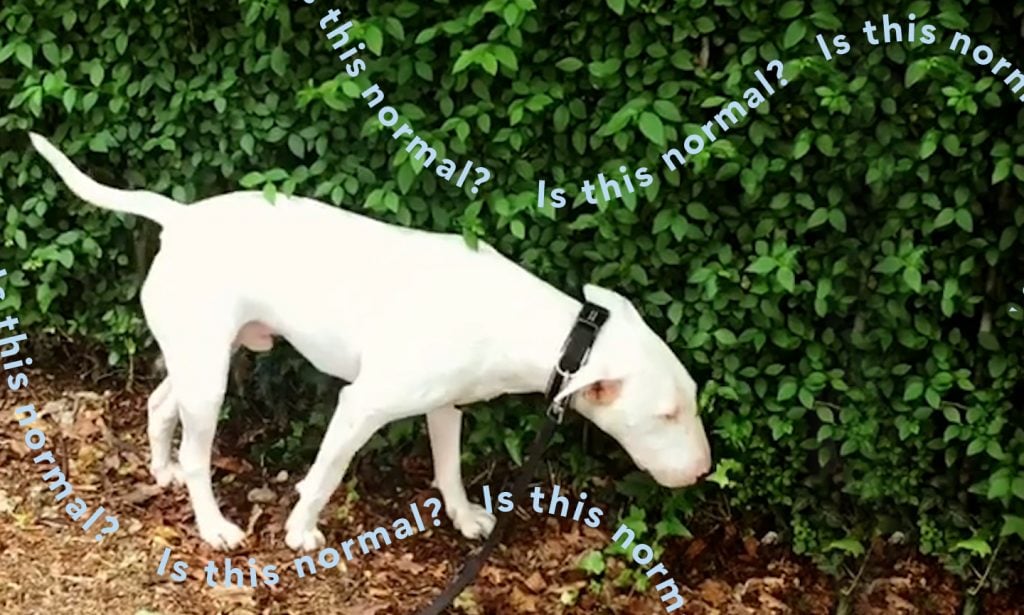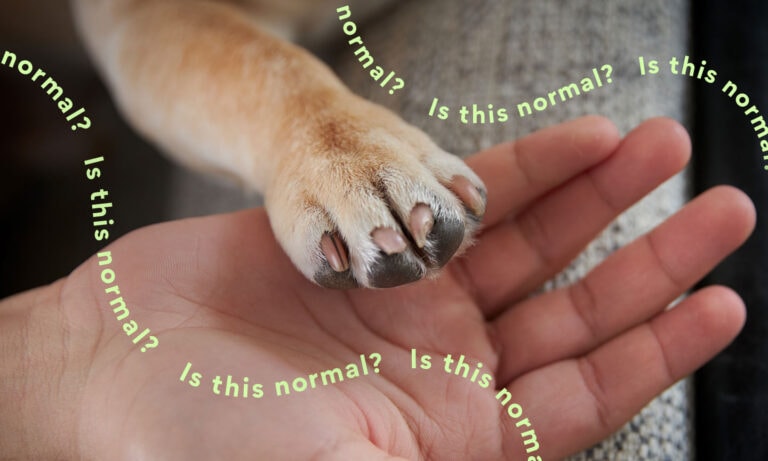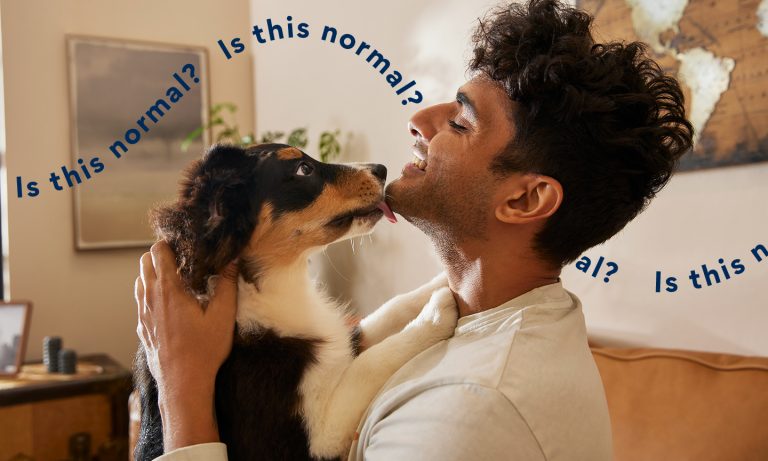Q:My dog will sometimes walk under my plants really slowly. It’s the weirdest thing—it’s almost like he is dreaming or in a trance! Should I be concerned with this behavior?
A: You were right on the money when you said it seems like your pup is in a trance. This behavior is actually called “dog trancing,” although it’s sometimes called “weed walking” or “ghost walking.” It definitely can be strange or concerning the first time you first see it. The good news? It’s a pretty normal behavior that tends to be harmless.
What Is Dog Trancing?
Dog trancing is pretty much exactly what it sounds like. It’s an odd behavior that “makes them look like they are in a trance,” say Dr. Sarah Wooten, DVM, CVJ, a veterinarian at Sheep Draw Veterinary Hospital in Greeley, Colorado.
So what does that look like exactly?
“When dogs are trancing, they tend to walk very slowly, back and forth, under something that lightly touches their head and back,” adds Dr. Jennifer Coates, DVM.
Courtesy milky_the_bullterror/Instagram
Both vets agree that your dog may be trancing if:
- They are walking very slowly, almost like they’re in slow motion
- They are slowly walking under an object and/or repeating this behavior several times
- They’re acting very still or “frozen”
- They have a “far away expression” on their faces
- They may be hard to distract
Dogs who are prone to trancing may also seek out certain objects to rub their backs against, such as:
- Curtains
- Houseplants or plants, especially those with low-hanging branches
- The underside of beds
- Tablecloths
- Anything that’s the “right height for them,” meaning they can easily access it to stand underneath and rub their back on it.
What Type of Dogs Are Prone to Trancing?
Trancing has been observed in many different breeds, some more than others.Bull Terriers and Greyhounds are two breeds that tend to exhibit this behavior, says Chelsea Murray, CPDT-KA, KPA-CTP, CTDI, trainer and owner of Pawsitive Futures Trainer & Behavior in Atlanta, Georgia.
It also seems to be more common in dogs who have a tendency to develop compulsive behaviors, such as tail chasing, spinning and fence running. Although, Dr. Coates notes, there’s no established link between dogs who trance and who have compulsions, and it may simply be a coincidence.
The bottom line: Whether you have a Labrador, Jack Russell, Basset Hound or lovable mutt, your pup could certainly engage in this strange behavior!
Why Do Dogs Trance?
The reason behind trancing is still a mystery to both dog owners and veterinarians. Some have thought it resembles a type of obsessive-compulsive disorder or even a seizure, because atypical seizures may cause altered mental activity and odd behaviors. However, it’s unclear whether it can be tied to such issues.“We don’t know the cause of trancing or if it is associated with seizure activity or obsessive compulsive behavior, but thankfully it is usually pretty harmless,” Dr. Coates says.
It’s possible that rubbing against a low-hanging branch or silky tablecloth could just feel really good to the dog!
That said, if you think your dog is having a seizure or experiencing other neurological issues, take them to the veterinarian for a wellness check. (Not sure what a dog seizure looks like? Find out here.)
When to See a Vet if Your Dog Is Trancing
If you’re concerned about your dog’s slo-mo walking or trance-like state, “it is always helpful to get a checkup from a vet … to rule out any possible underlying medical conditions, such as seizures,” Dr. Wooten says.If your vet has ruled out any medical conditions, Dr. Wooten recommends talking to a certified canine trainer or behaviorist.
Talk to your vet or a trainer or behaviorist if:
- Your dog starts trancing out of blue
- Your dog is experiencing other significant behavioral changes along with trancing
- They’re rehearsing or repeating this trancing behavior excessively
- You’re unable to grab your dog’s attention
- The dog appears “off” or more tired than usual after a trancing episode
- Your dog is “tail chasing” or chasing their shadow during these episodes
What to Do About Dog Trancing?
It can be concerning for pet parents to see their pup in a trance-like state, but remember, it’s usually pretty harmless.“In general, since this behavior is believed to be benign, and potentially even enjoyable, we allow the dog to do this without human interference,” Murray says.
However, if your dog is trancing in an inappropriate spot (think: under your fragile table or near shelves holding delicate items), our experts recommend the following steps to help change or stop the behavior:
- Use a positive interrupter—like their name, a silly noise, or a hand target—to help capture the dog's attention and redirect them to a more appropriate location.
- Managing their environment to prevent the unwanted behavior from happening in that location, e.g. putting up a dog gate or exercise pen.
- Adding enrichment activities to your pup’s day. This can help “reduce stress from boredom and release feel-good chemicals in their brain,” according to Dr. Wooten. Some ways to add enrichment include:
- Interactive food bowls
- Puzzle toys
- Long-lasting chews
- Increased exercise
- Training sessions
Learn more about weird dog behavior:
Share:









